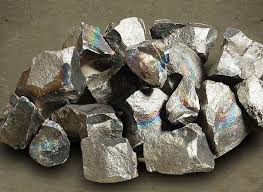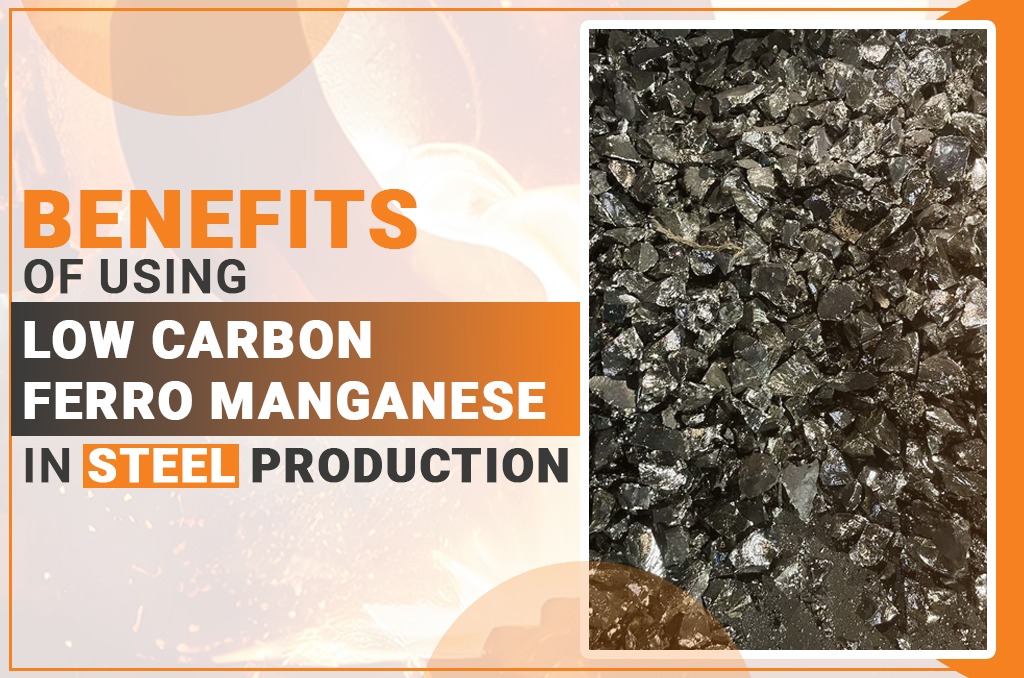Low Carbon Ferro Manganese
In the competitive and quality-driven world of steel manufacturing, choosing the right additives and alloys is crucial. One of the most important but often overlooked components is Low Carbon Ferro Manganese (LC FeMn)—an alloy that plays a vital role in improving the quality, strength, and performance of steel.
This blog will delve deeper into the properties, uses, and advantages of low carbon ferro manganese in steelmaking, explaining why it’s a preferred choice for many metallurgical processes in 2025 and beyond.
What is Low Carbon Ferro Manganese?

What is Low Carbon Ferro Manganese
Low Carbon Ferro Manganese is an alloy consisting primarily of iron (Fe) and manganese (Mn) with a very low carbon content, usually less than 0.1%. This reduced carbon concentration makes it highly suitable for producing steel that requires strict control over carbon levels.
It is typically manufactured by the thermochemical reaction of manganese ore with ferrosilicon and coke in an electric furnace. It is then refined to reduce the carbon levels, often using oxygen or other desulfurizing and decarburizing agents.
Why is Manganese Important in Steelmaking?
Manganese is essential to steel production for several reasons:
- Acts as a deoxidizer and desulfurizer
- Improves strength, toughness, and hardness
- Increases resistance to wear and abrasion
- Reduces the risk of hot cracking during welding
When introduced in low-carbon form, it allows for all these benefits without adding unwanted carbon, which can make the steel brittle or less weldable.
In-Depth Benefits of Low Carbon Ferro Manganese

Benefits of Low Carbon Ferro Manganese
1. Enhances Mechanical Strength
The presence of manganese helps to improve tensile strength, impact resistance, and hardness, making steel more durable and suitable for heavy-duty applications such as construction machinery, automotive components, and defense infrastructure.
2. Maintains Low Carbon Integrity
In applications like stainless steel, tool steel, and high-performance alloy steels, low carbon levels are critical. LC FeMn provides the necessary manganese boost while preserving the low carbon structure, essential for ductility, toughness, and formability.
3. Superior Desulfurizing and Deoxidizing Ability
Sulfur and oxygen are detrimental to steel as they cause brittleness and weak points. Low carbon ferro manganese removes these impurities, improving steel’s homogeneity, strength, and finish.
4. Improved Weldability
High carbon content in steel often leads to the formation of hard and brittle microstructures in the heat-affected zones during welding. LC FeMn prevents this issue by maintaining uniform softness and toughness, making it ideal for welded structural components.
5. Boosts Corrosion and Oxidation Resistance
By enhancing the integrity of the steel matrix, LC FeMn indirectly increases resistance to oxidation and corrosion, which is essential for marine environments, chemical plants, and outdoor infrastructure.
6. Aids in Grain Refinement
Low carbon ferro manganese promotes finer grain structure, which enhances the toughness and fatigue resistance of steel, especially useful in automotive and aerospace applications where precision and performance are vital.
- Helps in Clean Steel Production
LC FeMn is integral to producing ultra-clean steel, which is required in high-precision industries such as electronics, surgical tools, and high-speed railway tracks.
8. Environmentally Sustainable
The modern steel industry is under pressure to cut down emissions and energy consumption. Using LC FeMn supports this cause by:
- Reducing the need for reprocessing
- Lowering energy use during smelting
- Minimizing carbon footprint
Applications of Low Carbon Ferro Manganese
- Stainless Steel Industry – For non-corrosive and durable kitchenware, surgical tools, and pipes
- Automotive Sector – In chassis, gears, engine components, and body structures
- Shipbuilding – Where high strength and corrosion resistance are required
- Infrastructure & Construction – Used in bridges, buildings, tunnels, and highways
- Oil and Gas Pipelines – For improved corrosion resistance and durability
- Precision Engineering – In aerospace and military-grade applications
Future Trends: Why LC FeMn Will Matter More
With the steel industry leaning towards lightweight, high-strength, and low-emission steel grades, the use of LC FeMn is expected to rise. Key future trends include:
- Growth in electric vehicle production (demanding stronger but lighter steel)
- Increased infrastructure investments in developing countries
- Tighter regulations on carbon emissions in steel production
All these factors will make low carbon ferro manganese an indispensable alloy for the steel of tomorrow.
7 SEO-Friendly FAQs
1. What is Low Carbon Ferro Manganese used for?
Low Carbon Ferro Manganese is used in steelmaking to enhance strength, toughness, and deoxidization without adding excessive carbon, making it ideal for high-grade and stainless steel production.
2. How does Low Carbon Ferro Manganese improve steel quality?
It improves steel by removing impurities like sulfur and oxygen, enhancing tensile strength, and preserving weldability by maintaining low carbon content.
3. Is Low Carbon Ferro Manganese suitable for stainless steel?
Yes, it is widely used in stainless steel production because it enhances corrosion resistance while maintaining the required low carbon levels.
4. What industries use Low Carbon Ferro Manganese?
Industries such as construction, automotive, aerospace, shipbuilding, and energy sectors use it for producing durable and high-performance steel components.
5. Why is low carbon important in steel alloys?
Low carbon improves ductility and toughness and prevents brittleness, especially in weldable or precision-engineered steel grades.
6. How is Low Carbon Ferro Manganese made?
It is produced by refining standard ferro manganese in a process that removes carbon through oxygen blowing or similar decarburizing methods.
7. Is Low Carbon Ferro Manganese environmentally friendly?
Yes, its use reduces carbon emissions in steelmaking, lowers energy consumption, and helps in cleaner production of high-quality steel.
Conclusion
Low Carbon Ferro Manganese is no longer just an option—it’s a strategic asset in modern steel manufacturing. It improves strength, toughness, and weldability while maintaining essential carbon limits. Its benefits touch every stage of production—from cleaner processing to better performance and longer-lasting steel.
Whether you’re producing construction-grade steel, precision tools, or high-end automotive components, LC FeMn is a must-have for manufacturers focused on quality, performance, and sustainability.
Meta Title
Benefits of Low Carbon Ferro Manganese in Steel Production | High-Quality Steel Additive
Meta Description
Discover how Low Carbon Ferro Manganese enhances steel strength, weldability, and corrosion resistance. Learn its key applications and benefits in modern steelmaking.
